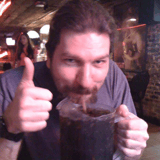Summary
How do you keep human needs balanced with those of a business, especially when the business is the largest power and gas company in the country? Gretchen Anderson is the Head of Design at PG&E, and she talks about how she's scaling what she's learned across an enterprise-level organization.
Key Insights
-
•
In utilities like PG&E, delivery failure is catastrophic, so design must prioritize reliability over speed.
-
•
Enterprise organizations have varied ideas of what constitutes 'good enough,' complicating design consensus.
-
•
Pair design, involving peers from different roles, accelerates idea iteration and reduces designer blind spots.
-
•
Designers often feel paranoid and undervalued in large organizations, stemming from isolation and lack of invitation to decision making.
-
•
Leading through making—creating tangible artifacts like storyboards and prototypes—helps designers invite themselves to the table.
-
•
Design operations teams act like lawyers for the design system, helping teams adapt and flex guardrails effectively.
-
•
Fostering authentic, facilitated relationships within the organization combats designer paranoia and increases influence.
-
•
Designers must balance fighting for the best user experience with pragmatic business considerations and appropriate UX debt.
-
•
Workshopping and informal team activities like running build community and humanize designers within corporate culture.
-
•
Human-centered design applies not only to end users but also to the experiences people have working with the design team.
Notable Quotes
"Silicon Valley feels fast, but when the grid goes down, it can be catastrophic."
"That kind of feature would never have made it to the top of anyone's backlog without design."
"The enterprise really likes this A to B to C situation, but breaking that open can be a real challenge."
"Designers can be really paranoid and very precious."
"Pair design is about two people as peers, different perspectives getting to a great place."
"Leading through making is how I invite myself to the table by supplying things, storyboards, prototypes."
"No wiki in the world is as good as somebody who can tell you how to bend the rules a little bit."
"You are not the union boss for the user; your responsibility is balancing what debt is appropriate at any time."
"Workshops are not just about sticky notes, they are about people interacting and relating to designers."
"Human-centered design is not just about your end users; it’s about the humans in your team too."
Or choose a question:
















More Videos

"You need strong regional players with negotiation skills to navigate the split loyalties in global teams."
Adam Cutler Karen Pascoe Ian Swinson Susan WorthmanDiscussion
June 8, 2016

"UXers are less satisfied than their peers because we have failed to set expectations about the real work of UX in organizations."
Peter MerholzThe Trials and Tribulations of Directors of UX (Videoconference)
July 13, 2023

"Governance isn’t about choking creativity, it’s about putting bounds and clarity that enable purposeful collaboration."
Lisa WelchmanCleaning Up Our Mess: Digital Governance for Designers
June 14, 2018

"We need to rethink how our cities are designed and function."
Vincent BrathwaiteOpener: Past, Present, and Future—Closing the Racial Divide in Design Teams
October 22, 2020

"Growth and learning is your long term change management plan."
Brenna FallonLearning Over Outcomes
October 24, 2019

"Never be afraid to get into good trouble; start by asking why."
Tricia WangSpatial Collapse: Designing for Emergent Culture
January 8, 2024

"Marital status mattered because car buying decisions often involve family members, not just the individual."
Edgar Anzaldua MorenoUsing Research to Determine Unique Value Proposition
March 11, 2021
"We want to build teams with diverse skill sets so we can create a full picture during the knowledge creation phase."
Designing Systems at Scale
November 7, 2018

"A lot of developers are way too confident they write perfect code; testing bug fixes often reveals hidden issues."
Erin WeigelGet Your Whole Team Testing to Design for Impact
July 24, 2024
















